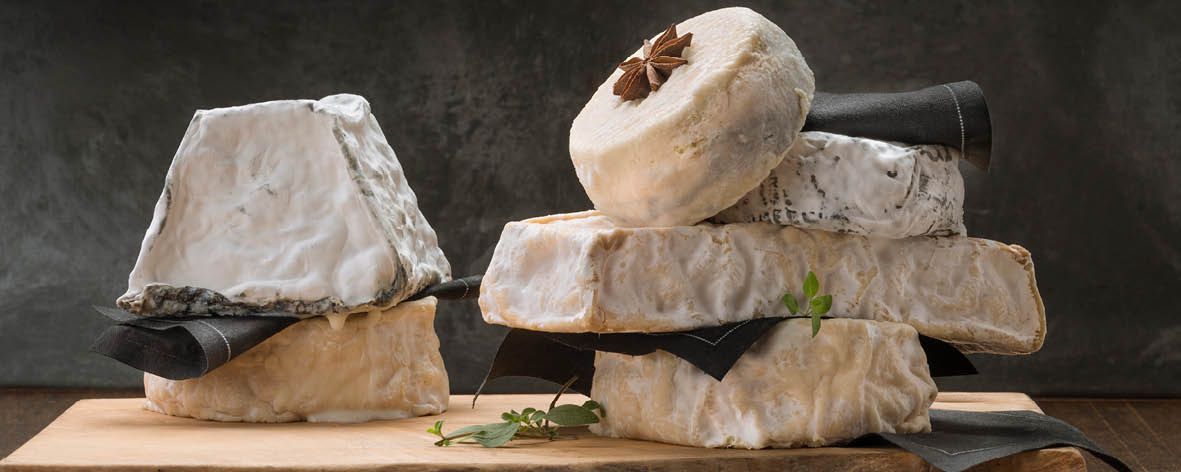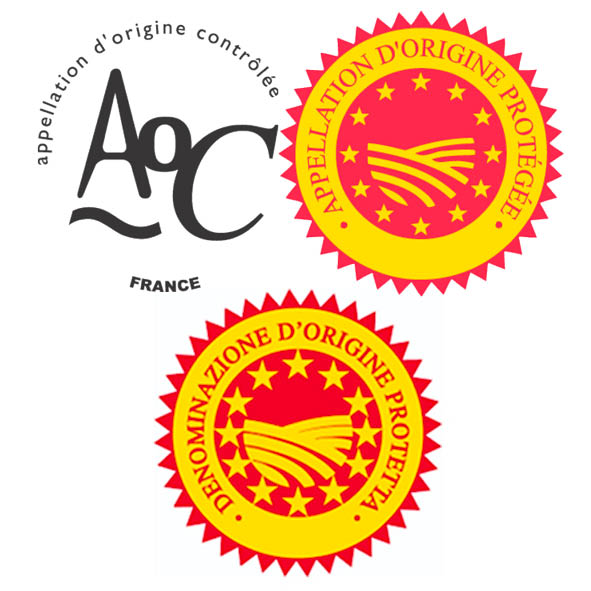A guide to appellation designations … or what those letters on cheese actually mean

The world of gourmet cheese is highly competitive with thousands of varieties of cheese produced around the world each year. It’s understandable therefore that countries take the production of cheese very seriously and have developed safeguards and systems to protect their brands and reputation. One of these measures is the protected designation of origin (DPO or PDO) label. But what does that actually mean? And what do all those letters like AOC, AOP, DOP on cheese tell you about the cheese?
The protected designation of origin status is basically a geographical indication and quality scheme designed to help consumers to have confidence in products they purchase. This labelling means that the cheese in question comes from a specific region and is bound by official regulations regarding its production. These regulations govern the cheesemaking process including ingredients, methods and aging, as well as animal breeds, milk source, cheese composition and physical attributes. Thus, Roquefort must be made from a specific breed of sheep and Parmigiano Reggiano must be produced in a strictly designated area of northern Italy. Similarly in the world of wine, Champagne must actually come from Champagne, otherwise it is sparkling wine.
Just to make things a little more confusing, there are different terms used to describe protected designation of origin in different countries. This is because the protected designation of origin status began long before the formation of the European Union, so countries like France and Italy had already created their own DPOs. As the term translates differently in languages other than English, the acronyms used are different. Irrespective, if you want the peace of mind of knowing that you are getting outstanding quality and flavour here’s some you should know:

AOC – used for French cheeses, this was first created in the 15th century and stands for “Appellation d’Origine Côntrolée”, which means controlled label of origin. This designation is your guarantee that the cheese has been inspected by representatives from the label to ensure that it follows the guidelines of geography, production, storage and maturity.
DOP – used for Italian cheeses, this is the “Denominazione di Origine Protetta”, which means protected designation of origin. Like the AOC, it is a mark of quality and an assurance that production methods, aging and storage meet the strict guidelines for certification.
AOP – just as AOC is governed by the French, AOP is governed on a European level. It stands for “Nomenclature of Protected Origin, Europe” and is used to mark protected cheeses from across Europe, including France.
So, there you have it, our quick guide to protected designation of origin. Of course choosing cheese is very much a personal choice that is guided by flavour preference and taste, but if you want to guarantee that you are enjoying a genuine product and authentic taste, look for the certification labels.

